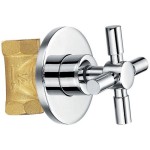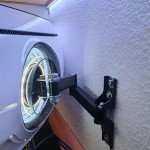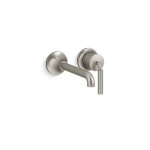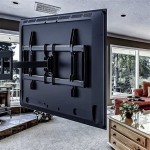Outdoor Misting Fan Wall Mount: A Comprehensive Guide
Outdoor misting fans offer a practical solution for combating heat in outdoor environments. The wall-mounted variety, in particular, presents a space-saving and efficient method of distributing cool air and moisture. Understanding the features, benefits, and installation requirements of outdoor misting fan wall mounts is crucial for making an informed purchasing decision.
Key Point 1: Understanding the Benefits of Wall-Mounted Misting Fans
Wall-mounted misting fans offer numerous advantages over other types of cooling systems. Primarily, they conserve ground space, making them ideal for patios, decks, and other areas where floor space is limited. By mounting the fan on a wall, users can avoid the inconvenience of tripping hazards and maintain a cleaner, more organized outdoor environment.
Furthermore, wall-mounted misting fans provide directed cooling. The ability to aim the fan's airflow allows users to customize the cooling experience, directing the mist towards specific areas or individuals. This targeted approach enhances comfort and avoids unnecessary overspray.
Another benefit lies in their inherent durability. Many outdoor misting fan wall mounts are constructed from weather-resistant materials such as stainless steel, powder-coated aluminum, or durable plastics. These materials are designed to withstand exposure to the elements, ensuring longevity and minimizing maintenance requirements. The elevated position further protects the fan from accidental damage or contact with ground-level debris.
Finally, wall mounting often simplifies access to power and water connections. Existing outdoor outlets and water lines can frequently be leveraged for installation, reducing the need for extensive modifications or alterations to the outdoor space. This streamlined installation process minimizes disruption and makes the setup more convenient.
Key Point 2: Essential Features to Consider
When selecting an outdoor misting fan wall mount, several key features should be carefully considered to ensure optimal performance and suitability for the intended application. These features encompass misting capabilities, fan specifications, material construction, and control options.
The misting system is arguably the most critical component. Understanding the type of misting nozzle, droplet size, and water pressure requirements is paramount. Look for models with adjustable misting settings to fine-tune the humidity level and prevent excessive saturation. Nozzles should be easy to clean or replace to maintain consistent mist output and prevent clogging. Consider models with filters to ensure clean water is used, this will increase the lifespan of the pump and provide a cleaner mist.
Fan specifications, including blade diameter, motor speed, and airflow (measured in CFM – cubic feet per minute), directly impact the cooling effectiveness. Larger blade diameters typically translate to greater airflow, while adjustable speed settings offer flexibility in controlling the cooling intensity. Ensure the motor is rated for outdoor use and can withstand the demands of continuous operation.
Material construction is vital for ensuring durability and longevity. As previously mentioned, weather-resistant materials such as stainless steel, powder-coated aluminum, or UV-resistant plastics are highly recommended. These materials resist corrosion, fading, and other forms of degradation caused by prolonged exposure to sunlight, moisture, and temperature fluctuations. Examine the joints and connections to ensure they are robust and well-sealed.
Control options provide flexibility and convenience in operating the misting fan. Basic models may feature simple on/off switches, while more advanced models offer remote controls, timers, and even smart home integration. Consider the ease of access to the control panel and the convenience of adjusting the settings from a distance. Some models may also include sensors that automatically adjust the misting intensity based on ambient temperature and humidity levels. These sensors automatically change the operation of the fan, increasing efficiency and preserving water.
Finally, consider the noise level of the fan. Quieter models are preferable for residential settings or any environment where noise pollution is a concern. Look for specifications indicating the decibel (dB) level of the fan at various speeds and choose a model that meets your noise tolerance.
Key Point 3: Installation Considerations and Best Practices
Proper installation is crucial for ensuring the safe and effective operation of an outdoor misting fan wall mount. Prior to installation, carefully assess the wall's structural integrity to ensure it can adequately support the weight of the fan and its associated components. Consult a qualified professional if you are unsure about the wall's load-bearing capacity.
Determine the optimal mounting location based on factors such as wind direction, sunlight exposure, and proximity to power and water connections. Position the fan to maximize airflow and mist distribution while minimizing the risk of overspray or interference with other structures or vegetation. Ensure adequate clearance around the fan to allow for unobstructed airflow and safe operation.
Follow the manufacturer's instructions meticulously when installing the mounting bracket and securing the fan to the wall. Use appropriate hardware, such as lag bolts or expansion anchors, to ensure a secure and stable attachment. Double-check all connections to prevent loosening or slippage over time. Consider using a level to ensure the fan is mounted straight and plumb.
Connect the water supply using appropriate fittings and hoses. Ensure the water pressure is within the manufacturer's recommended range to prevent damage to the misting system. Install a backflow preventer to protect the water supply from contamination. Consider using a water filter to remove sediment and other impurities that could clog the misting nozzles.
Connect the electrical supply using a weatherproof outlet or a dedicated circuit. Ensure the wiring complies with local electrical codes and regulations. Use a ground fault circuit interrupter (GFCI) outlet to protect against electrical shock. Consider using a surge protector to protect the fan's motor and electronics from power surges. After completing the installation, thoroughly test the fan and misting system to ensure they are functioning properly. Check for leaks, unusual noises, or any other signs of malfunction. Make any necessary adjustments to optimize the performance and ensure safe operation.
Regular maintenance is essential for prolonging the lifespan of the outdoor misting fan wall mount. Clean the misting nozzles periodically to remove mineral deposits and prevent clogging. Inspect the water lines and electrical connections for leaks or damage. Lubricate the motor and other moving parts as needed. Protect the fan from freezing temperatures during the winter months to prevent damage to the water lines and components. By following these installation guidelines and maintenance practices, users can enjoy the benefits of an outdoor misting fan wall mount for years to come.
Addressing common issues promptly is crucial for maintaining optimal performance and preventing further damage to the outdoor misting fan wall mount. One common problem is clogged misting nozzles, which can result in reduced mist output or uneven distribution. To resolve this issue, remove the nozzles and soak them in a solution of vinegar and water to dissolve mineral deposits. Use a small brush or needle to clear any remaining debris. Alternatively, replace the nozzles with new ones if they are severely damaged or corroded.
Another potential problem is low water pressure, which can affect the misting system's effectiveness. Check the water supply line for kinks, leaks, or obstructions. Ensure the water pressure is within the manufacturer's recommended range. If necessary, install a pressure booster to increase the water pressure. Additionally, inspect the water filter and clean or replace it if it is clogged.
Electrical problems can also occur, such as blown fuses, tripped circuit breakers, or damaged wiring. Check the electrical outlet and the fan's power cord for any signs of damage. Replace any damaged components and ensure the electrical connections are secure and properly grounded. If the problem persists, consult a qualified electrician to diagnose and repair the issue.
Finally, improper mounting can lead to instability or damage to the wall. Re-tighten the mounting hardware and inspect the wall for any signs of stress or cracking. If necessary, reinforce the wall or relocate the fan to a more suitable location. By addressing these common issues promptly, users can ensure the continued safe and efficient operation of their outdoor misting fan wall mount.

Twm Mist Fan Wall Mounted 9l

18 Wall Mounted Misting Fan Big Fogg Systems Solutions

Misting Fan System Outdoor 18 Inch Oscillating High Pressure With Stainless Steel Ring Mistcooling Com

Ktw Misting Outdoor Fans Ozmist

Aoibox 32 In 3 Speed Misting Wall Fan Black With 9500 Cfm And Ip44 Waterproof For Outdoor Residential Snsa05 1in020 The Home

Outdoor Wall Mount Misting Fans For Tornado Cool Mist Fan

Continental Dynamics 24 Wall Mounted Misting Fan Outdoor Rated Oscillating 7435 Cfm 1 7 Hp

Misting Fan Mc87040 Mistcooling Inc Wall Mounted Axial Stainless Steel

24 Wall Mounted Misting Fan Big Fogg Systems Solutions

Misting Fans Outdoor Wall Mount 18 Inch Fan System Nozzles








